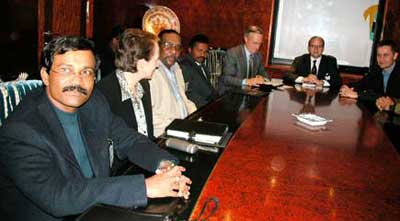Reply To:
Name - Reply Comment
Last Updated : 2024-04-19 21:20:00
 By D.B.S. JEYARAJ
By D.B.S. JEYARAJ Speaking to the point the Norwegian envoy said that the LTTE was being boxed into a small piece of territory and that it was only a matter of time before the Army advanced further and annihilated the tigers. He pointed out that there was absolutely no need for Colombo to agree to a ceasefire at a time when they were sure to defeat the LTTE.
Speaking to the point the Norwegian envoy said that the LTTE was being boxed into a small piece of territory and that it was only a matter of time before the Army advanced further and annihilated the tigers. He pointed out that there was absolutely no need for Colombo to agree to a ceasefire at a time when they were sure to defeat the LTTE.
Add comment
Comments will be edited (grammar, spelling and slang) and authorized at the discretion of Daily Mirror online. The website also has the right not to publish selected comments.
Reply To:
Name - Reply Comment
On March 26, a couple arriving from Thailand was arrested with 88 live animal
According to villagers from Naula-Moragolla out of 105 families 80 can afford
Is the situation in Sri Lanka so grim that locals harbour hope that they coul
A recent post on social media revealed that three purple-faced langurs near t